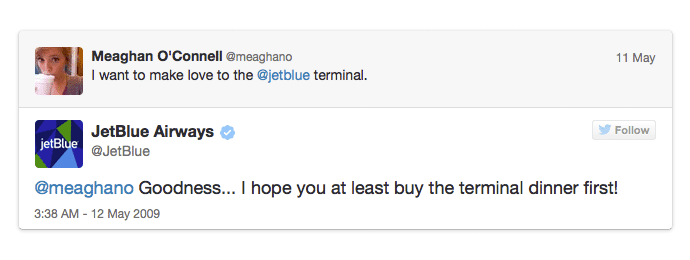Regardless of your niche, calling today’s business landscape “competitive” would be an understatement. With so much competitor content, it’s becoming increasingly difficult to set yourself apart as a brand and catch your customers’ attention.
It’s no longer a matter of building a business website and sharing some content on your social media profiles to get the traffic and sales pouring in. You’ll have to invest the time and effort to build a strong content strategy that helps acquire, engage, and retain more customers.
So what exactly can you do to stand out as a brand? While there are many things to try, here are five proven tips to set yourself apart.
#1 – Leverage Video
Video is all the rage. YouTube, not Yahoo or Bing, is the second biggest search engine today after Google. Your customers love to watch videos on pretty much everything, from how-tos and reviews to recipes and interviews.

Unsurprisingly, Cisco predicts videos will drive 82% of all consumer internet traffic by 2022 — 15 times higher than it was in 2017.
Furthermore, 70% of businesses say that videos boost brand awareness, and 85% of people say that videos help them connect with brands more effectively, as per Renderforest.
So, video can be a great way to set your brand apart from your competitors, and maybe even go viral.
Create a YouTube channel for your brand and post videos on it regularly. Don’t forget to post on other major social platforms like Facebook, Instagram, Twitter, TikTok, and LinkedIn (especially if you’re into B2B) so your content garners the highest possible attention and engagement.
While creating quality video content consistently is more challenging than text-based content, here are a few low-cost, high-return ideas to get cracking:
- Screencast how-to tutorials and educational presentations.
- Video testimonials from happy customers.
- Behind the scenes of your brand, such as a tour of your workplace or teams in action.
- DIY animated explainer videos.
- Expert interviews.
#2 – Put Out Content Your Customers Truly Want
As you know, the internet is overflowing with lackluster content today, with over 7.5 million blog posts being published each day. So if you wish to stand out and capture your audience’s attention, you need to publish content that’s not only of the highest quality but also in accordance with your target audience’s needs and wishes.
You can conduct social listening and competitor research, but the best way to learn about your audience’s preferences is to ask them directly. That is, build short survey forms and share them over email newsletter and social media. Place it on your website as well. Encourage more responses by offering incentives (such as a discount or free trial) in exchange for completing the survey.

Then, keep updating your content strategy based on what you learn from the surveys and research. Go beyond blog posts — infographics, videos, podcasts, etc. — to capture new segments of your audience, as not everyone prefers reading long articles.
Some people may prefer listening to your article on the go. Others may prefer watching a quick video on the same. So, repurpose your content into different formats to get the most out of every piece.
If you’re into B2B, putting out super-researched, data-backed, and insightful content like white papers, case studies, and webinars is a good bet.
#3 – Engage With Your Audience Authentically on Social Media
As a brand, social media enables you to engage with your customers in a more “human” way.
You can ditch the formal way of communication (such as on email or phone) and have a more colloquial approach to customer engagement, replying to comments and queries in an informal yet helpful way. Use emojis and slang to talk like an individual with a personality.
This makes your brand more affable and relatable.
Drive more conversations with your customers by directly asking them to comment. Something like “Let us know your favorite __” or “What’s your best advice on __?” in your caption, or even commenting on your followers’ posts, can ignite great engagement.
When potential customers come across your authentic and fun social media conversations, they’re likely to give you a follow and even consider you over your competitors.

Also, you’re bound to get negative feedback and reviews from time to time, and you must treat these occasions as opportunities to prove you value your customers’ opinions.
Respond in a timely, frank, and friendly way, guaranteeing a better experience next time. This is how you build a strong reputation and set yourself apart from your competition.
#4 – Create a Customer Referral Program
A powerful way to get more customers, retain existing ones, and stand out as a brand is to create a great referral program.
When existing customers invite potential customers (people in their network such as friends and colleagues) to try out your brand, those potential customers are far more likely to pay attention and also convert.
However, even with a quality product and brand experience, your customers usually won’t be proactive in referring your brand to others — unless you provide them a nice incentive to do so.
A referral program, as the name suggests, offers special perks or rewards to customers who bring you more business. It helps boost your brand visibility and gives your potential customers a great reason to choose you over your competitors.
Using any of the referral program tools, here’s the process you can follow to build a customer referral program:
- Choose an incentive, such as a discount code or a gift card for their next purchase with you.
- Create the landing page for your program. Keep it quick and easy — ask only for the necessary information such as name and email address.

- Promote the program on your website, checkout page, order confirmation page, newsletter, and social media channels for interested customers to sign up. Make the program easy to share on social media.
- After they opt-in, give a unique referral link that they can easily share with their friends.
- Minimize friction for customers in getting the reward — if someone converts using their referral link, they receive the reward — easy as that.
Simply put, a customer referral program incentivizes people to spread the good word about your brand, facilitating customer acquisition in any crowded niche.
#5 – Have an Onboarding Process in Place
A well-thought-out onboarding process is vital to engaging and retaining new customers.
Once someone completes a purchase, your goal should be to quickly show them how your product will help them solve their problems. For that, you need to have an onboarding process in place.
Onboarding emails are a great way to decrease any potential friction in your product adoption and create a strong first impression on new customers. While there are plenty of onboarding emails you can send, the following should play a key role in your onboarding strategy:
- Warm welcome email: These types of emails have some of the highest engagement of all marketing emails, with an average open rate of 84.22% and a click-through rate of 25.91%. That’s because new customers are excited about your product and brand. Welcome them to your brand’s community, and neatly highlight the benefits of your product.
- Proactive how-to email: New users may feel a bit overwhelmed when trying your product. A how-to email (for example, one with FAQs or a quick “getting started” guide) can reduce friction in using your product by answering common concerns, without them having to seek support.
- Social proof email: Your newly signed-up users think your brand is worthy of a shot, but do they know just how much (and why) your existing customers love your brand? A social proof email with reviews and testimonials is what you need. In fact, 72% of consumers say positive testimonials and reviews boost their trust in a brand, while 88% of consumers trust online testimonials and reviews as much as recommendations from friends or family. So, sending an email that showcases your brand and its products in a positive light is a great way to reinforce trust, engagement, and retention.
Along the same lines, if you have a SaaS product, then using any of the Apty Alternatives such as Whatfix, you can easily create guided product tours for onboarding and training new users.
Wrapping Up
There’s a lot more you can do to become an outstanding brand — ensure excellent customer service every single time, display a ton of social proof in the form of product reviews, success stories, influencer endorsements, etc., and gather and work on customer feedback in public to prove your brand is a customer-first one.
To get started, however, consider implementing these tried-and-true tips into your strategy.
So, over to you — what are you currently doing to set your brand apart from the competition? Do share your tips and tactics in the comments below.
Author Bio
Hazel Raoult is a freelance marketing writer and works with PRmention. She has 6+ years of experience in writing about business, entrepreneurship, marketing, and all things SaaS. Hazel loves to split her time between writing, editing and hanging out with her family




